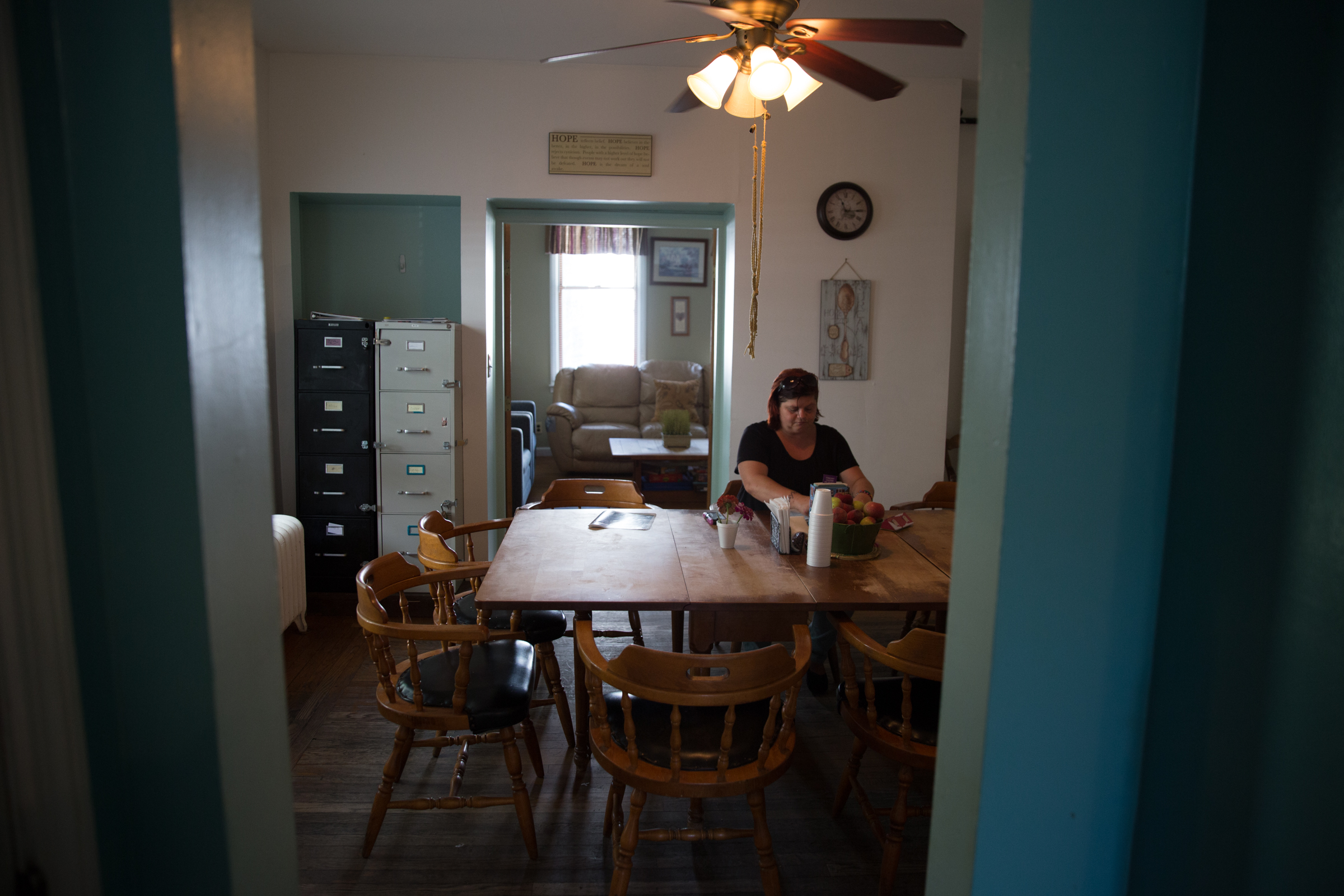Learning From The AIDS Housing Crisis

A resident in the kitchen of a halfway house in New London, Connecticut. Photo by Ryan Caron King for WNPR.
OPINION
States struggling with the opioid crisis – and most particularly states in New England – could learn from the AIDS crisis – both what to and what not to do.
Thirty years ago, people living with AIDS could easily find themselves kicked out of housing over misinformation about how the disease was spread. Out on the streets, proper medical care was (and is) hard to come by, with the chances of recovery slim. The result was a two-headed snake: Homelessness fed the crisis – untreated people who were homeless got sicker and sicker — even as the crisis kept pushing more people onto the streets.
Meanwhile, the federal government’s response was tragically slow, so in 1989, concerned advocates and activists from five Connecticut organizations started Connecticut AIDS Residence Coalition, dedicated to providing much-needed housing resources and other services to people with AIDS, said Shawn M. Lang, AIDS Connecticut deputy director.
“We saw that people were beginning to lose their housing because they got sick,” said Lang. “They couldn’t work any more, or their family, friends, partners, lovers kicked them out.”

Shawn Lang in a WNPR file photo.
Known as “AIDS housing,” the programs were the forerunner of today’s supportive housing, where housing includes support services that keep them housed, get them healthy, and address whatever issues put them on the streets.
Through CARC’s and others’ efforts, in 1990, under then-Pres. George H.W. Bush, the federal government passed Housing Opportunities for People with AIDS (HOPWA), which allocated money to states and communities to provide housing and needed services for people living with AIDS, along with their families.
It’s too early to tell precisely how many people have become homeless because of opioid addiction, but we do know this: Substance abuse among people who are homeless is not new, and the opioid crisis is quickly adding to the rolls. Advocates around New England have been talking about the challenges for a while now. Pres. Donald J. Trump recently declared the opioid crisis a “health emergency,” but allocated no funds for treatment, housing, or other initiatives.
This crisis needs — as did the AIDS crisis — action.
“Empty words from an empty administration,” said Lang. “We need resources.” AIDS programs struggle already with funding. There is no extra to shift to the opioid crisis, Lang said.
Scientific breakthroughs have helped people live with AIDS for years, though the crisis isn’t over. The number of new cases is startling, particularly in the South, said Lang.
But there is hope. And there is at least some housing, which once was in short supply.
There’s been no such hope in today’s opioid crisis. According to the Centers for Disease Control and Prevention, 91 people die every day from opioid overdose. An October Pew Research Center survey said that nearly half of all Americans – 46 percent — have a family member or a close friend who has been addicted to drugs. That figure cuts across all political, racial, ethnic, and class lines. An August report from the CDC said that overdose deaths will most likely rise sharply this year, as they did last year. The National Institutes of Health says for people who live outside of urban areas, opioid poisoning has increased three times the rate of poisonings as in urban areas.
The crisis is nationwide, but may be particularly acute in parts of New England. In June, a USA Today story called New Hampshire “ground zero” of the opioid crisis. The state ranks second behind West Virginia for opioid-related overdoses, at 34.3 per 100,000, compared to West Virginia’s 41.5 per 100,000. Last year, Maine averaged more than one overdose a day, at 376. Connecticut, according to TrendCT, averaged twice that in 2015.
Opioids can fall into several categories, including fentanyl, heroin, and prescription drugs such as oxycodone, morphine, and others. Regular use of prescription drugs can lead to dependence – even when the drugs are taken as prescribed. The CDC says nearly half of all opioid overdoses involve a prescription drug.
Substance abuse can be both cause and effect of homelessness, and the best answer for more than 25 years has been the Housing First model, said Lang. Housing First sets a low bar for entrance to housing. There is no requirement that the client be sober, though that might be the eventual goal. Housing First involves clients in their recovery process, and there’s a healthy component of integrating clients into their communities.
The idea of Housing First is mostly credited to Sam Tsemberis, whose New York non-profit social service agency, Pathways to Housing, pioneered offering housing to difficult-to-house clients who’d been rejected by other programs. At the time, New York, according to Tsemberis, had roughly 120,000 people who were homeless, and a significant portion of them were receiving no services at all — and little hope of housing.
That was the early ’90s, and since then, the Tsemberis’ model has been adopted by advocates around the world. Housing First is challenging in ways other housing models aren’t, but it is also the single most successful approach to housing vulnerable people, such as the people who are swept up in the opioid crisis.
“I will say to people, ‘It’s not easy,’” said Lang. “It’s harder to say, ‘Something just happened, you’re struggling, what can we do to get you housed.’ That’s what we need to be doing, because if you look at the research and the data around all this, “ Housing First works. In fact, for people who are placed through Housing First programs, 75 to 91 percent are still housed a year later.
We already saw what inaction and empty words accomplished during the early part of the AIDS crisis. People died. We have the tools to do better on this one.
